In 2023 we installed 2 beehives on the roof at our Reading HQ, with an initial 30,000 honey bees which rapidly increased to 120,000.
We’re immensely proud of our bees and their work ethic. In 2024, the 120,000 bees on our roof top produced a bumper ‘freebee’ harvest – 61kg of Kyocera Bee Kind honey, which makes us all feel rather humble.

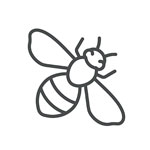

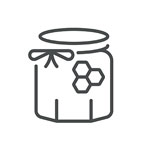
Noel Gillett (Modern Workplace Manager – Harrods), put Kyocera Bee Kind honey to good use and was inspired to create the ‘Bee Sting’.
Ingredients for 1 serving
Mix the ingredients together and shake with ice for 15 seconds. 1 part = 1oz = 25ml = single shot
Gently heat 2 parts honey with 1 part water in a saucepan over a medium heat stirring until honey is dissolved for a few minutes then allow to cool. Store in an airtight container in the fridge.
If you’re after a delicious non-alcoholic drink try the Bee’s Knees, invented in the 1920s at Café Parisian, Paris Ritz.
Ingredients for 1 serving
Fill shaker with ice, lemon juice, honey syrup and sparkling water Shake for 25 seconds Strain into cocktail glass, garnish and serve 1 part = 1oz = 25ml = single shot
Gently heat 2 parts honey with 1 part water in a saucepan over a medium heat stirring until honey is dissolved for a few minutes then allow to cool. Store in an airtight container in the fridge.
Looking for a winter warner or something to keep you going, try Graham’s – our Product Marketing Lead – Hot Honey Toddy.
Ingredients to keep you going for the afternoon or 3 servings:
Top up with milk – adjust levels to taste.
Serve in a tall coffee cup or high ball glass.
Ingredients
50g dark chocolate, melted
Oven on to 180°C fan. Grease and line a 30cm brownie tin. Make the honeycomb by heating the sugar, honey and salt in a pan until the mixture is bubbling and reaches 145°C (use a jam thermometer). Remove from the heat and stir through the bicarbonate, the mixture will bubble. Pour the honeycomb onto a sheet of parchment and leave to set for 5 minutes until hardened then bash into small pieces. Heat the butter, sugar and honey together in a pan until melted then mix through the oats. Stir through the broken up honeycomb then pour into the prepared tin. Bake for 25-30 minutes. Drizzle over the melted chocolate then leave to cool.
Follow Briony on Instagram @brinoymaybakes
Infuse with herbs and honey to bring out the natural flavour of the vegetables for a festive side dish.
Ingredients
Preheat oven to 180C Fan. Peel and trim the carrots / parsnips, cut large vegetables lengthways. Place on a baking tray and pour over the olive oil. Season with salt and pepper, toss well Roast for 15–25 minutes, or until almost tender and lightly browned. Whisk the honey and lemon juice together. Take the tin out of the oven and drizzle over the honey and lemon mixture. Pick the herb leaves off the sprigs and scatter over. Toss lightly and return to the oven for a further 8–10 minutes, or until the carrots are tender and glossy.
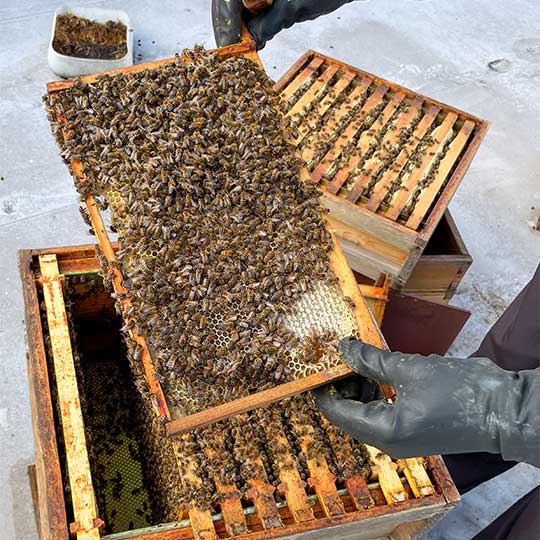
Our office rooftop is an ideal, safe place for our pollinators to call home as the environment fulfils the three main requirements that they need:
Within our area of Reading there is a huge and varies amount of forage available, from parks and gardens to waste ground and railway cuttings. All of which is free from pesticides, unlike rural areas, which ensures that our bees remain healthy.
There is consensus amongst bee aficionados regarding the location of beehives on a roof, the hive should be in a dry sunny position and face a southerly direction in the Northern hemisphere and a northerly direction in the Southern hemisphere. The idea is that the bees will get the maximum amount of sunlight at the earliest possible time in the morning.
Many factors play a part in how productive a beehive will be. The strength of the colony – are there enough foraging bees? What forage is available – does it vary or is it just one type of flower or a floral desert like a field of wheat? Weather – is it conducive to flight? What is the humidity like?
Generally, a hive will produce around 18 to 22Kg’s, however this can drop to 0 or be as high as 45Kg’s.
Here in the U.K. there are two main nectar flows plus the heather nectar flow. The first flow is between mid-April to the end of May, with a second flow from mid-June to the first week of August. The heather flow is normally between August and September.
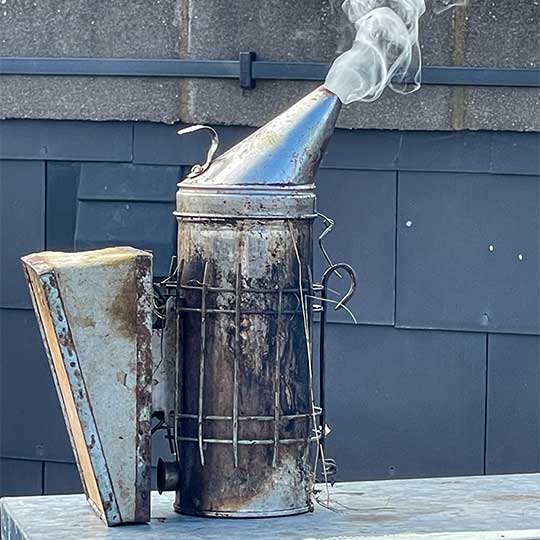
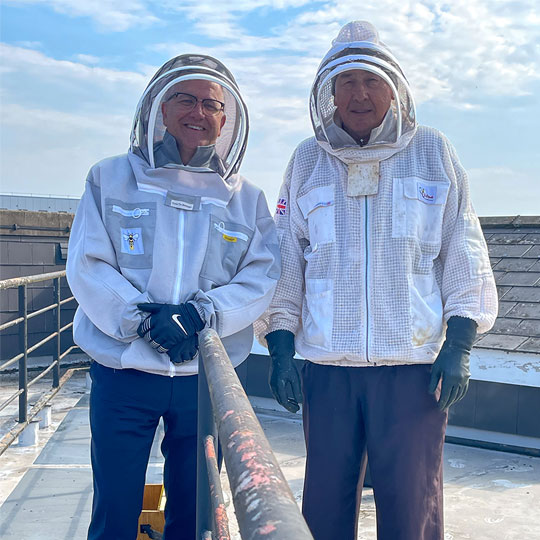
Steve, our local beekeeper, has bred and supplied them from a stock of UK honeybees. He will pop in regularly throughout the year to check on them and make sure they stay healthy and bumble along nicely. He will also make sure the colonies don’t get too big and start swarming i.e. leave the hive as a big group.
Steve up on the roof with our CEO Rod Barthet (on left).
Kyocera’s toner systems have fewer components than other toner systems which reduces the number of components in a Kyocera toner system by over 85%, an average competitor’s toner container includes 60 separately manufactured components, while an original KYOCERA toner cassette includes just four.
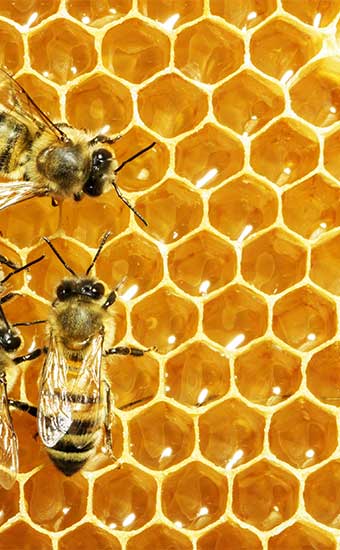
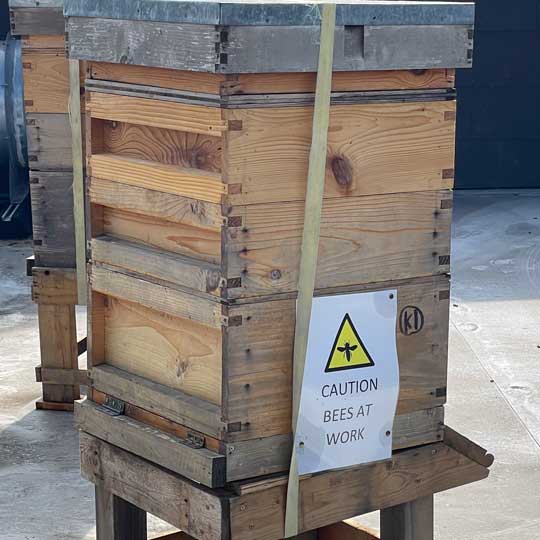
Humans have been working with Honeybees for over 9000 years, however many people find the idea of keeping bees in cities strange and worry about the dangers of large groups of bees near humans. There is a perception that bees are aggressive and dangerous to people.
People need not fear honeybees as they have been bred for safety. With urban beehives usually placed where there is minimal human contact, the only places where an encounter could happen is when honeybees are pollinating flowers in window boxes, trees and gardens.
Urban beekeeping isn’t just good for the environment, it’s essential to the future of green cities. Urban beekeeping helps people connect with their environment, promotes pollination of flora, supports urban agriculture, and provides data to scientists and planners designing sustainable solutions.
Rooftop beehives are a great way to bring biodiversity to a building. Scientific studies have revealed that bees thrive in urban areas, more so than in suburban or rural locations. In light of this, corporate urban rooftops have huge potential to be crucial sites of pollinator support.
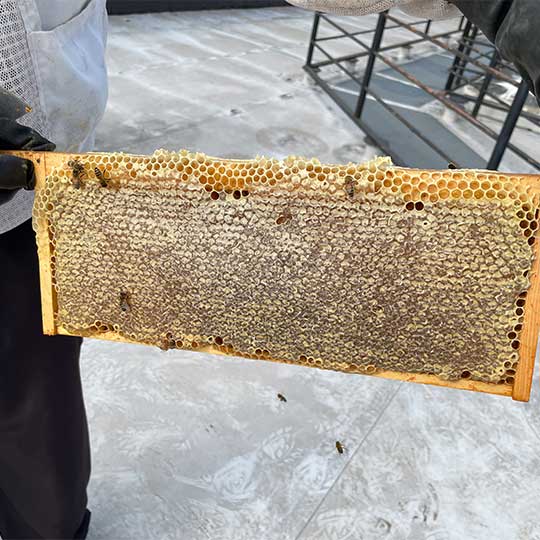
©2024 Kyocera Document Solutions (UK) Limited